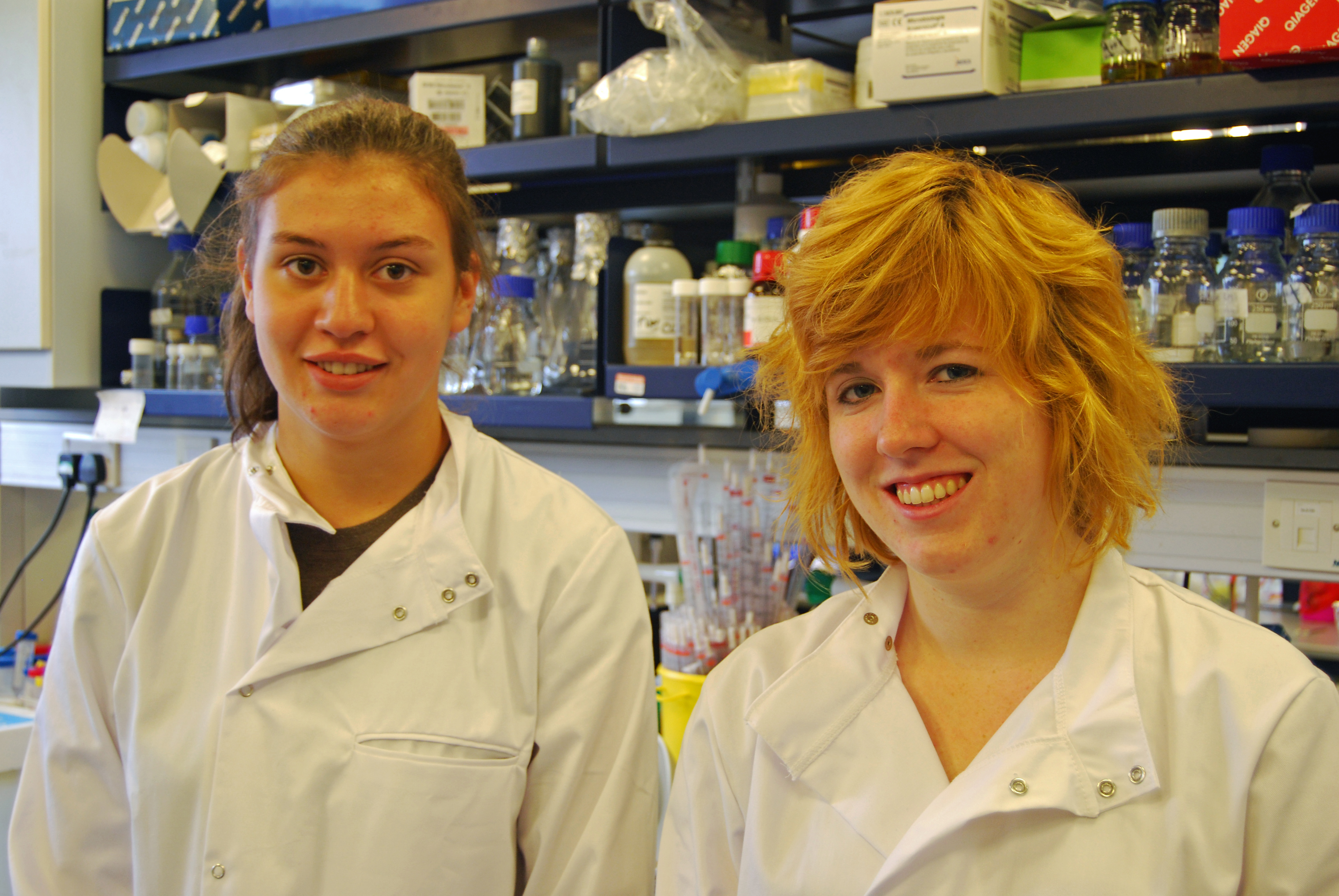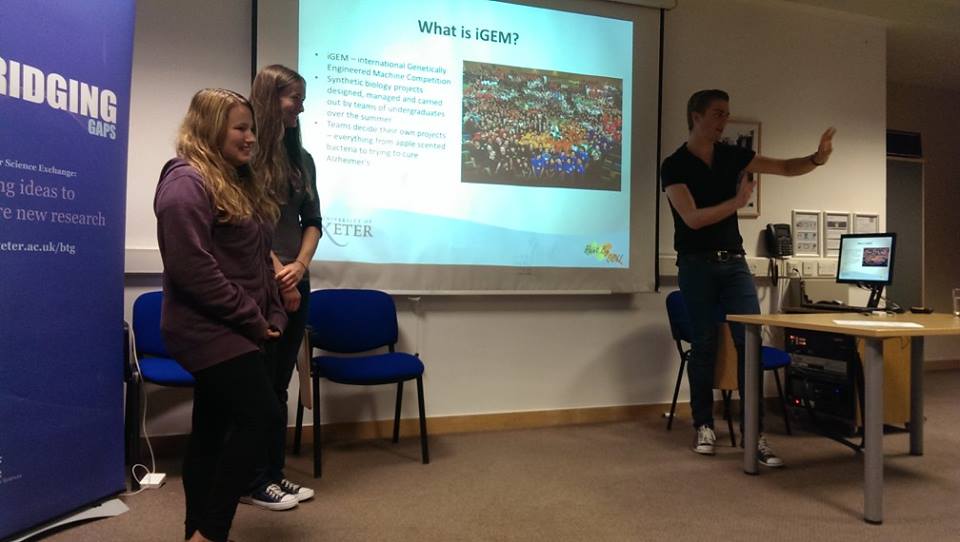Team:Exeter/Outreach
From 2013.igem.org
Fentwistle (Talk | contribs) (→Bridging the Gaps) |
Fentwistle (Talk | contribs) (→Bridging the Gaps) |
||
| Line 15: | Line 15: | ||
== Bridging the Gaps == | == Bridging the Gaps == | ||
| - | [[File:Bridging the gaps.jpg| | + | [[File:Bridging the gaps.jpg|left||300px|Image: 300 pixels|Bridging the Gaps showcase]] |
We had the opportunity to present our project to a group of scientists in early September as part of the [http://www.exeter.ac.uk/btg/ EPSRC's Bridging the Gaps initiative]. Bridging the Gaps brings together scientists from a variety of disciplines to discuss their work, build partnerships, present findings and stimulate creative thinking. We presented our project alongside scientists discussing bioart, designer biofuels, the use of neuroscience in social science and more. The feedback we received was largely positive, with some fantastic questions coming from the audience. | We had the opportunity to present our project to a group of scientists in early September as part of the [http://www.exeter.ac.uk/btg/ EPSRC's Bridging the Gaps initiative]. Bridging the Gaps brings together scientists from a variety of disciplines to discuss their work, build partnerships, present findings and stimulate creative thinking. We presented our project alongside scientists discussing bioart, designer biofuels, the use of neuroscience in social science and more. The feedback we received was largely positive, with some fantastic questions coming from the audience. | ||
Revision as of 15:49, 29 September 2013
Our ever helpful, extremely patient Sixth Form students
We have been lucky enough to be assisted by three sixth form students over this summer. Hector, Beccy and Gina spent a few weeks with us, learning about the University and the workings of a research lab. Beccy and Gina were given placements with the University of Exeter through the prestigious [http://www.nuffieldfoundation.org/nuffield-research-placements Nuffield Foundation], whereas Hector managed to organise working with us through his [http://www.exeterschool.org.uk/ college].
We showed them how our project is expected to work, the history behind the concepts within our project, and we worked together in the lab to learn new techniques using a variety of technology and equipment. All three managed to clock some good hours in the lab, learning how to make agar plates, gels, set up digestions and ligations and comforting the rest of us when things didn't quite go to plan. We were incredibly impressed with how hard they worked, the speed at which they picked up new techniques and ideas, and their excellent questions about the project and University life in general.
Although we were only able to work with three students in the way, this represents a fantastic outreach opportunity for our team. There is no better way to teach someone about iGEM than letting them have a go themselves, and although we supervised their work, all three of the students proved their understanding of the project and the impacts it could have on iGEM and the scientific community in general. Instead of simply presenting our project to them, they had a chance to explore the project for themselves and learn the details behind it.
Bridging the Gaps
We had the opportunity to present our project to a group of scientists in early September as part of the [http://www.exeter.ac.uk/btg/ EPSRC's Bridging the Gaps initiative]. Bridging the Gaps brings together scientists from a variety of disciplines to discuss their work, build partnerships, present findings and stimulate creative thinking. We presented our project alongside scientists discussing bioart, designer biofuels, the use of neuroscience in social science and more. The feedback we received was largely positive, with some fantastic questions coming from the audience.
Our presentation included a summary of iGEM and its aims, background details to the [http://parts.igem.org/Coliroid coliroid] concept, an explanation of how our project pushes this subject further and our success so far. We hoped to give people an idea as to what iGEM is, and how it allows undergraduates to learn and improve their skills in a creative and practical competition setting. We also wanted to introduce the ideas behind our project, and showcase an area of science which they may not have been exposed to. Considering that the audience was not composed purely of scientists, we also wanted to make the presentation accessible to someone who may not have studied a science for several years.
From the feedback we received, which included comments from the audience, other guest speakers and the people who master-minded the talks, we feel like we achieved these aims and well-represented both the University of Exeter and iGEM.
 "
"






